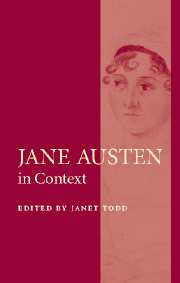14 - Sequels Deidre
Published online by Cambridge University Press: 19 December 2020
Summary
The sequels, prequels, retellings and spin-offs that Jane Austen’s novels have inspired can try the patience and tolerance of the reader who means to be true to her and her example. For one thing, these works are so very numerous. Bibliographies compiled at the end of the 1990s, and currently linked to the website ‘The Republic of Pemberley’, list over a hundred published books and stories engaging to grant us more of the stylish prose and vivid characterisation that we love in the original. New writers have added to this inventory annually. Never wasting words, practising an exquisite economy on that famous ‘little piece (two inches wide) of ivory’ that sufficed for her canvas, Austen represents in several accounts of the development of the novel the innovator who trimmed away the flab of the form. Yet through a strange twist of fate she appears to be the cause of verbiage in others. This is the case even though, measured against the other writers who defined the novel for the nineteenth century, Austen wrote very little. There are only the six novels and the two fragmentary beginnings, The Watsons (begun and abandoned in 1804) and Sanditon (left incomplete at Austen’s death in 1817). Speculating on readers’ readiness to construe this ‘little’ that Jane Austen wrote as ‘less than enough’, the sequel-writers offer us their wares as compensation for that deprivation. None of the novels has escaped becoming grist for their mill.
‘Sequel’ is a rubric I use loosely in this essay. It covers, for instance, the several books that have provided conclusions for The Watsons and Sanditon. Following the lead of the bibliographies mentioned above, I also use ‘sequel’ to label those works which, in either prolonging the novels’ action or renarrating it from different perspectives, also transfer their characters into a different generic register – anything from soft-core pornography (as in the 1981 continuation of Persuasion entitled Virtues and Vices, by the pseudonymous ‘Grania Beckford’) to fantasy (as in S. N. Dyer's 1996 Resolve and Resistance, which imagines a widowed Elizabeth Darcy using Pemberley as the base for a guerrilla movement against Napoleon’s occupying army, and learning, with the help of Admiral Nelson, to navigate a fleet of hot-air balloons – ‘moon boats’ – so as to lead this English resistance to victory).
- Type
- Chapter
- Information
- Jane Austen in Context , pp. 160 - 168Publisher: Cambridge University PressPrint publication year: 2005
- 8
- Cited by



